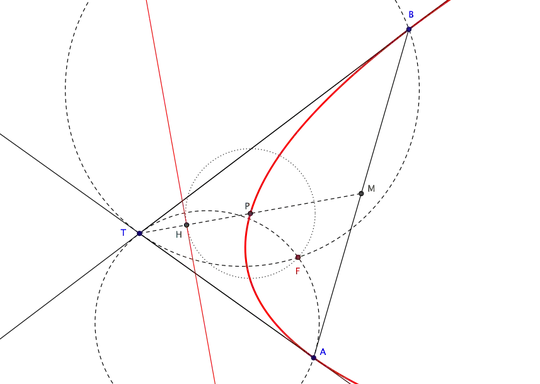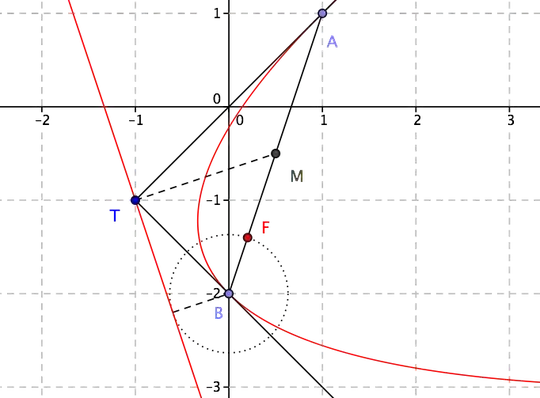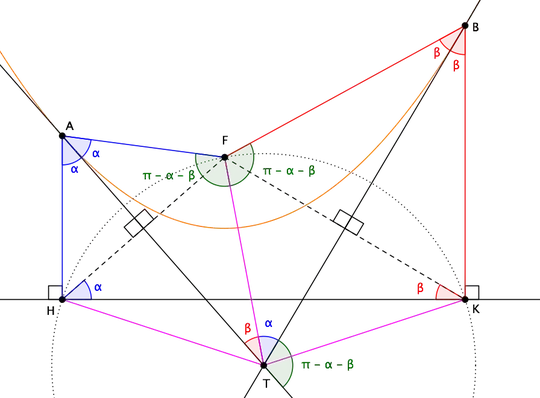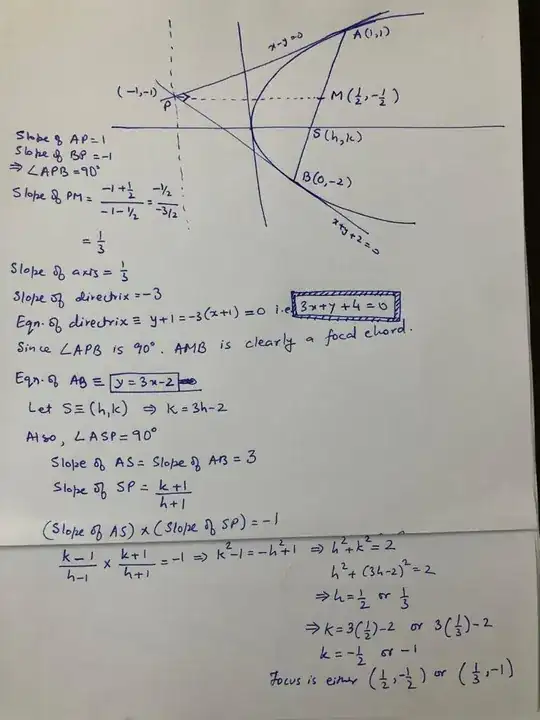Given points $A=(1,1)$, $B=(0,-2)$, $T=(-1,-1)$ (which is the intersection point of the tangents), the parabola touching $AT$ at $A$ and $BT$ at $B$ can be constructed using this property of a parabola (see EDIT 2 at bottom for a proof):
The exterior angle between any two tangents is equal to the angle
which either segment of tangent subtends at the focus.
Construct then the circle tangent to $AT$ at $T$ and passing through $B$, whose arc inside $\angle ATB$ is the locus of points at which $BT$ subtends an angle equal to the exterior angle. And similarly construct the circle tangent to $BT$ at $T$ and passing through $A$: the intersection of those circles, different from $T$, is the focus $F$ (see diagram below).
Finally, to construct the directrix, one can for example find the midpoint $M$ of $AB$ and subsequently the midpoint $P$ of $TM$, then $P$ is a point on the parabola and the directrix is the line perpendicular to $TM$ and intersecting $PT$ at a distance from $P$ equal to $PF$.

EDIT.
In this particular case things are even simpler, because tangents $AT$ and $BT$ are perpendicular: this implies that the directrix passes through $T$ and is perpendicular to line TM described above, while $AB$ is a focal chord (see here for a proof). Once the directrix is found, from points $A$ and $B$ it is easy to find focus $F$.

EDIT 2.
It may be useful to give a proof of the property mentioned at the beginning. Let then $F$ be the focus of the parabola, $A$, $B$ any two points on it, $H$, $K$ their projections on the directrix, $T$ the intersection point of the lines touching the parabola at $A$ and $B$ (see figure below).
As $AF=AH$ and $AT$ bisects $\angle FAH$, then $AT$ is the perpendicular bisector of $FH$ and $HT=FT$. Likewise, $FT=KT$ and $H$, $F$, $T$ belong to the same circle centred at $T$.
But $\alpha=\angle FAT=\angle HAT=\angle FHK$ (complementary of the same angle) and $\angle FHK=\angle FTB$ (inscribed angle and half of central angle subtending the same arc), hence $\angle FAT=\angle FTB=\alpha$. Similarly, $\angle FBT=\angle FTA=\beta$ and:
$$
\angle AFT=\angle BFT=\pi-\alpha-\beta =
\text{external angle formed by tangents $AT$ and $BT$.}
$$




